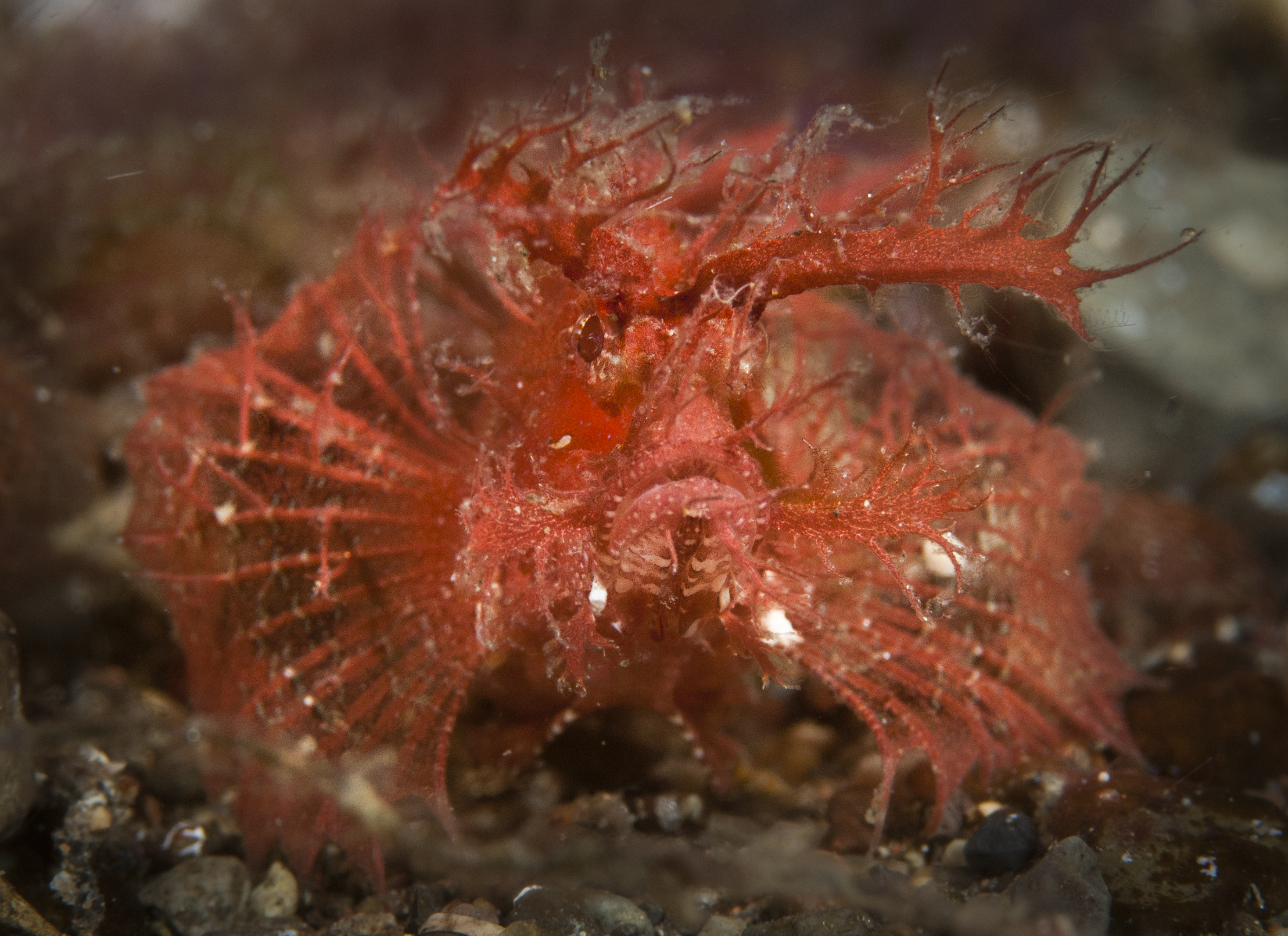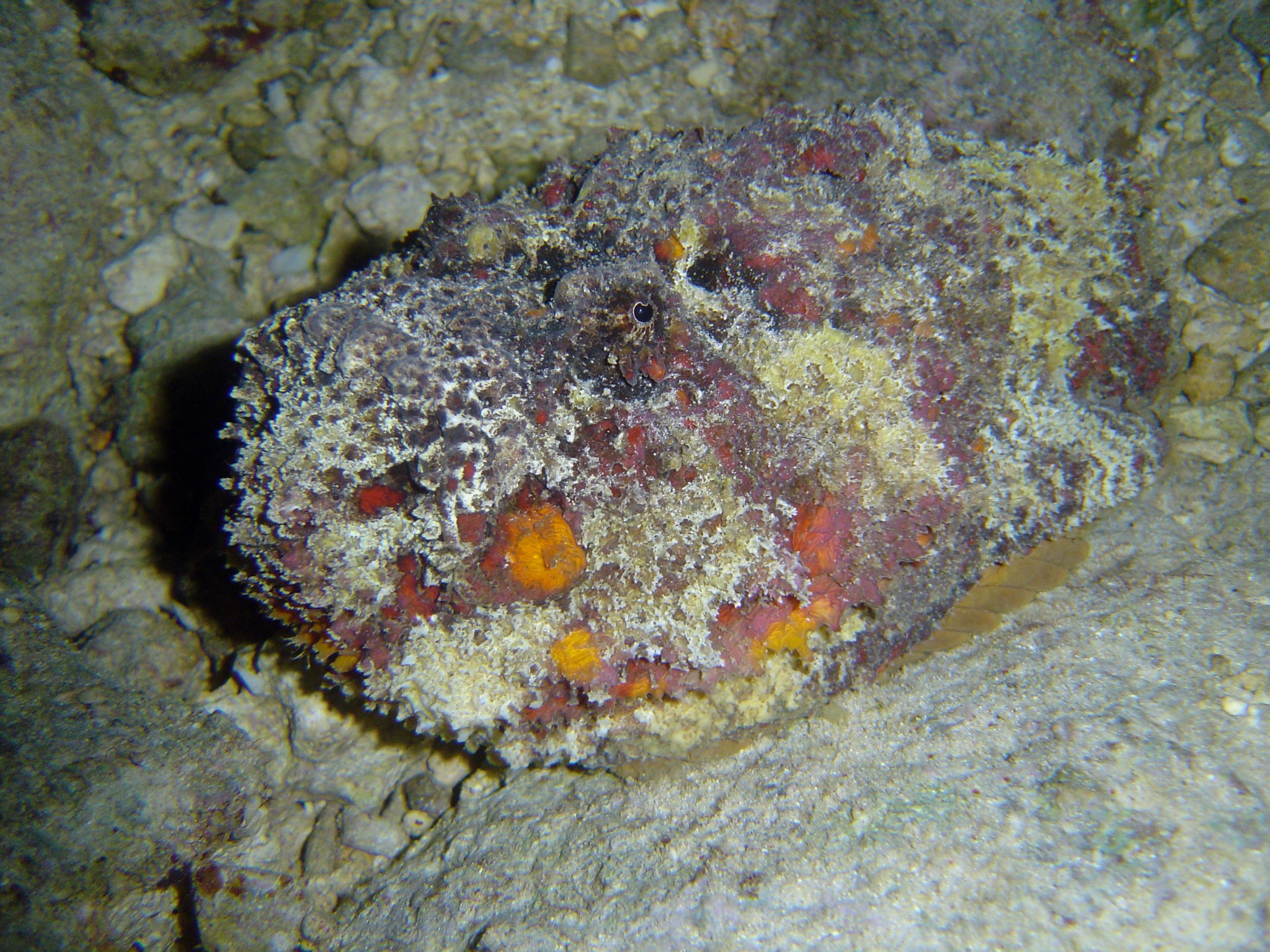|
Pteroidichthys
''Pteroidichthys'' is a genus of marine ray-finned fish belonging to the family Scorpaenidae, the scorpionfishes. The scorpionfishes in this genus are distributed in the Indian and Pacific Oceans. Taxonomy ''Pteroidichthys'' was first described as a genus in 1856 by the Dutch herpetologist, ichthyologist and physician Pieter Bleeker when he described ''Pteroidichthys amboinensis'' and he placed it in a monotypic genus. The genus name is a compound of ''pteroides'' which means "similar to ''Pterois''", and ''ichthys'' meaning "fish". Bleeker thought that this taxon was close to the lionfishes but was distinguished by, among other features, the lack of head spines. Species There are currently 4 recognized species in this genus: * '' Pteroidichthys acutus'' Motomura & Kanade, 2015 (Longsnout weedy scorpionfish) * '' Pteroidichthys amboinensis'' Bleeker, 1856 (Ambon scorpionfish) * '' Pteroidichthys caussei'' Motomura & Kanade, 2015 (Causse's scorpionfish) * '' Pteroidichthys ... [...More Info...] [...Related Items...] OR: [Wikipedia] [Google] [Baidu] |
Pteroidichthys Amboinensis
''Pteroidichthys amboinensis'', the Ambon scorpionfish or Godfrey's scorpionfish, is a species of marine ray-finned fish belonging to the family Scorpaenidae, the scorpionfishes. It is found in the Indian and Pacific oceans. Taxonomy ''Pteroidichthys amboinensis'' was first formally described in 1856 by the Dutch herpetologist, ichthyologist and physician Pieter Bleeker with the type localities give as Ambon Island in the Moluccas and Manodo on Sulawesi. When Bleeker described this species he classified it in a new genus, ''Pteroidichthys'', as the only species in the new genus making it the type species of that genus by monotypy. In 1954 the Australian ichthyologist Gilbert Percy Whitley described a new species as ''Rhinopias godfreyi'' from Exmouth Gulf in Western Australia but this taxon is now considered to be a junior synonym of ''P. amboinensis'', however, this species is still called Godfrey's scorpionfish in Australia. The specific name refers to the type locality of ... [...More Info...] [...Related Items...] OR: [Wikipedia] [Google] [Baidu] |
Pteroidichthys Caussei
''Pteroidichthys'' is a genus of marine ray-finned fish belonging to the family Scorpaenidae, the scorpionfishes. The scorpionfishes in this genus are distributed in the Indian and Pacific Oceans. Taxonomy ''Pteroidichthys'' was first described as a genus in 1856 by the Dutch herpetologist, ichthyologist and physician Pieter Bleeker when he described ''Pteroidichthys amboinensis'' and he placed it in a monotypic genus. The genus name is a compound of ''pteroides'' which means "similar to ''Pterois''", and ''ichthys'' meaning "fish". Bleeker thought that this taxon was close to the lionfishes but was distinguished by, among other features, the lack of head spines. Species There are currently 4 recognized species in this genus: * '' Pteroidichthys acutus'' Motomura & Kanade, 2015 (Longsnout weedy scorpionfish) * ''Pteroidichthys amboinensis'' Bleeker, 1856 (Ambon scorpionfish) * '' Pteroidichthys caussei'' Motomura & Kanade, 2015 (Causse's scorpionfish) * '' Pteroidichthys n ... [...More Info...] [...Related Items...] OR: [Wikipedia] [Google] [Baidu] |
Pteroidichthys Noronhai
''Pteroidichthys noronhai'', Noronha’s scorpionfish, is a species of marine ray-finned fish belonging to the family Scorpaenidae, the scorpionfishes. It is found in the central western Pacific Ocean. Taxonomy ''Pteroidichthys noronhai'' was first formally described as ''Pteropelor noronhai'' in 1938 by the American ichthyologist Henry Weed Fowler with the type locality given as near Hong Kong. The genus ''Pteroelor'' was subsequently recognised as a synonym of ''Pteroidichthys''. The specific name honours who was director of the in Madeira. Description ''Pteroidichthys noronhai'' has 12 rigid spines and 8-9soft rays in its dorsal fin with 3 spines and 5 soft rays in its anal fin. It has a relatively short snout, which avareages 15.3% of its standard length and is shorter than the distance between the rearmost part of the orbit and the rear edge of the operculum. The rearmost part of the maxilla reached beyond a vertical line through the centre of the pupil. It has poorly ... [...More Info...] [...Related Items...] OR: [Wikipedia] [Google] [Baidu] |
Scorpaenini
Scorpaenini is a tribe of marine ray-finned fishes, one of two tribes in the subfamily Scorpaeninae. This tribe contains the "typical" or "true" scorpionfishes. The taxonomy of the scorpionfishes is in some flux, the 5th Edition of Fishes of the World treats this taxa as a tribe within the subfamily Scorpaeninae of the family Scorpaenidae within the order Scorpaeniformes, while other authorities treat it as a subfamily within a reduced family Scorpaenidae within the suborder Scorpaenoidei, or the superfamily Scorpaenoidea within the order Perciformes. Genera The tribe Scorpaenini contains at least 17 genera and nearly 200 species: * '' Hipposcorpaena'' Fowler, 1938 * '' Hoplosebastes'' Schmidt, 1929 * '' Idiastion'' Eschmeyer, 1965 * '' Iracundus'' Jordan & Evermann, 1903 * '' Neomerinthe'' Fowler, 1935 * '' Neoscorpaena'' Mandrytsa, 2001 * ''Parascorpaena'' Bleeker, 1876 * ''Phenacoscorpius'' Fowler, 1938 * ''Pogonoscorpius'' Regan, 1908 * '' Pontinus'' Poey 1860 * ... [...More Info...] [...Related Items...] OR: [Wikipedia] [Google] [Baidu] |
Pieter Bleeker
Pieter Bleeker (10 July 1819 – 24 January 1878) was a Dutch medical doctor, ichthyologist, and herpetologist. He was famous for the ''Atlas Ichthyologique des Indes Orientales Néêrlandaises'', his monumental work on the fishes of East Asia published between 1862 and 1877. Life and work Bleeker was born on 10 July 1819 in Zaandam. He was employed as a medical officer in the Royal Netherlands East Indies Army from 1842 to 1860, (in French). stationed in the Dutch East Indies (now Indonesia). During that time, he did most of his ichthyology work, besides his duties in the army. He acquired many of his specimens from local fishermen, but he also built up an extended network of contacts who would send him specimens from various government outposts throughout the islands. During his time in Indonesia, he collected well over 12,000 specimens, many of which currently reside at the Naturalis Biodiversity Center in Leiden. Bleeker corresponded with Auguste Duméril of Paris. His w ... [...More Info...] [...Related Items...] OR: [Wikipedia] [Google] [Baidu] |
Yuka Kanade
Yuka may refer to: *Yuka (music), an Afro-Cuban style of music * Yuka (mammoth), mammoth specimen found in Yakutia, Russia *Manshu Yuka Kogyo K.K. Ssuningkai, a Japanese-German pre-WWII industrial co-operation People * Yuka (name), a Japanese personal name *Yuka (singer) YUKA, formally and formerly Yuka Sato (佐藤有香 ''Satō Yuka''), is a Japanese singer, born on December 10, 1970. She is best known for her work in Japanese animation, including the ending themes of several ''Dragon Ball Z'' theatrical films ( ... (born 1970), Japanese singer See also * Yuca, a plant species * Yucca (other) {{disambig ... [...More Info...] [...Related Items...] OR: [Wikipedia] [Google] [Baidu] |
Venomous Fish
Venomous fish are species of fish which produce strong mixtures of toxins harmful to humans (called venom) which they deliberately deliver by means of a bite, sting, or stab, resulting in an envenomation. As a contrast, poisonous fish also produce a strong toxin, but they do not bite, sting, or stab to deliver the toxin, instead being poisonous to eat because the human digestive system does not destroy the toxin they contain in their bodies. Venomous fish do not necessarily cause poisoning if they are eaten, as the digestive system often destroys the venom.Poisonous vs. Venomous fish: What’s the difference? Reef Biosearch. Retrieved 17 July 2009. There are at least 1200 species of venomous fish, Smith WL and Wheeler WC (2006 [...More Info...] [...Related Items...] OR: [Wikipedia] [Google] [Baidu] |
Total Length
Fish measurement is the measuring of individual fish and various parts of their anatomies. These data are used in many areas of ichthyology, including taxonomy and fisheries biology. Overall length * Standard length (SL) is the length of a fish measured from the tip of the snout to the posterior end of the last vertebra or to the posterior end of the midlateral portion of the hypural plate. Simply put, this measurement excludes the length of the caudal (tail) fin. * Total length (TL) is the length of a fish measured from the tip of the snout to the tip of the longer lobe of the caudal fin, usually measured with the lobes compressed along the midline. It is a straight-line measure, not measured over the curve of the body. Standard length measurements are used with Teleostei (most bony fish), while total length measurements are used with Myxini ( hagfish), Petromyzontiformes ( lampreys), and (usually) Elasmobranchii (sharks and rays), as well as some other fishes. Total leng ... [...More Info...] [...Related Items...] OR: [Wikipedia] [Google] [Baidu] |
Caudal Fin
Fins are distinctive anatomical features composed of bony spines or rays protruding from the body of a fish. They are covered with skin and joined together either in a webbed fashion, as seen in most bony fish, or similar to a flipper, as seen in sharks. Apart from the tail or caudal fin, fish fins have no direct connection with the spine and are supported only by muscles. Their principal function is to help the fish swim. Fins located in different places on the fish serve different purposes such as moving forward, turning, keeping an upright position or stopping. Most fish use fins when swimming, flying fish use pectoral fins for gliding, and frogfish use them for crawling. Fins can also be used for other purposes; male sharks and mosquitofish use a modified fin to deliver sperm, thresher sharks use their caudal fin to stun prey, reef stonefish have spines in their dorsal fins that inject venom, anglerfish use the first spine of their dorsal fin like a fishing rod to ... [...More Info...] [...Related Items...] OR: [Wikipedia] [Google] [Baidu] |
Dorsal Fin
A dorsal fin is a fin located on the back of most marine and freshwater vertebrates within various taxa of the animal kingdom. Many species of animals possessing dorsal fins are not particularly closely related to each other, though through convergent evolution they have independently evolved external superficial fish-like body plans adapted to their marine environments, including most numerously fish, but also mammals such as cetaceans ( whales, dolphins, and porpoises), and even extinct ancient marine reptiles such as various known species of ichthyosaurs. Most species have only one dorsal fin, but some have two or three. Wildlife biologists often use the distinctive nicks and wear patterns which develop on the dorsal fins of large cetaceans to identify individuals in the field. The bony or cartilaginous bones that support the base of the dorsal fin in fish are called ''pterygiophores''. Functions The main purpose of the dorsal fin is to stabilize the animal against r ... [...More Info...] [...Related Items...] OR: [Wikipedia] [Google] [Baidu] |



.png)
